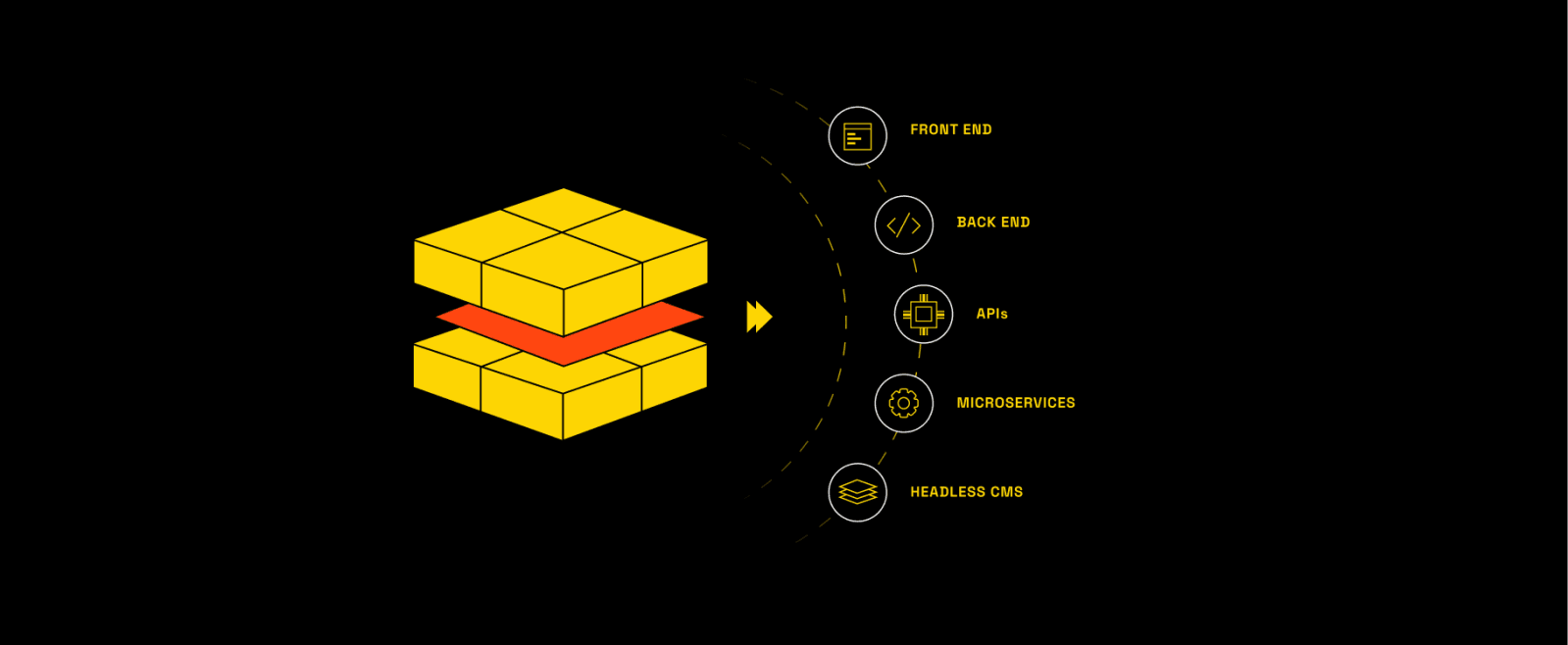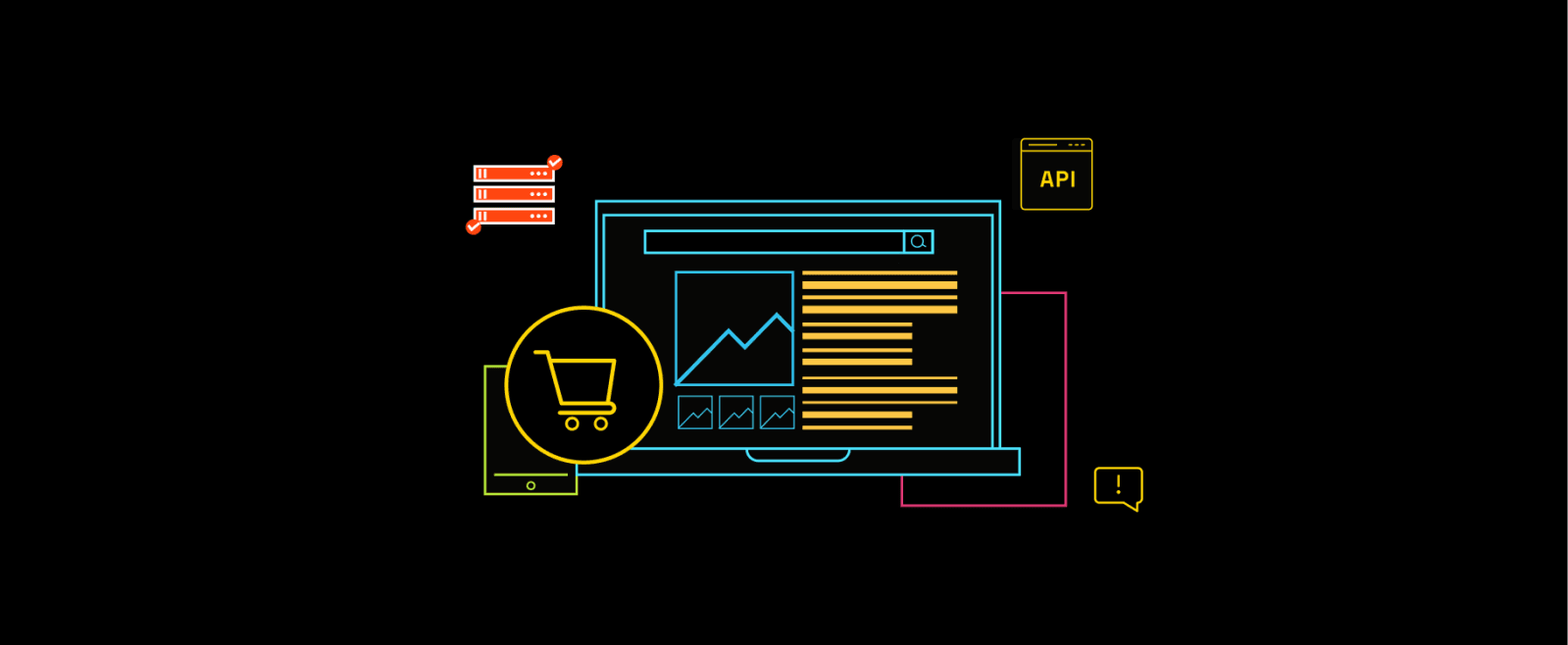10 Key Benefits of Composable Commerce
Composable commerce is a promising approach that modernizes digital commerce infrastructure and addresses the limitations of traditional platforms. By adopting a modular architecture, organizations can create an ecosystem of best-of-breed components tailored to their specific needs. This approach not only enhances technological integration but also highlights the key benefits of composable commerce. Continue reading to discover how it can help your business thrive in a competitive market.
What is Composable Commerce: A Strategic Overview
Composable commerce enables businesses to adapt, innovate, and scale faster by replacing rigid, all-in-one platforms with flexible, modular systems. Instead of relying on rigid, all-in-one solutions, it allows organizations to assemble their commerce ecosystem by selecting and integrating the best components to meet their specific business needs.
Here's how composable commerce compares to traditional monolithic platforms:
| Aspect | Composable Commerce | Traditional Monolithic Platforms |
|---|---|---|
| Business Flexibility | Quickly adapt to market changes by selecting, replacing, or adding individual components | Bound by platform limitations; changes require extensive development or vendor involvement |
| Tool Selection | Freedom to choose best-in-class solutions for each function (PIM, CMS, Search, etc.) | Limited to vendor-provided features or complex custom integrations |
| Innovation Speed | Launch new features or experiments in weeks | Changes typically take months due to interdependencies |
| Risk Management | Reduced vendor lock-in; ability to replace underperforming components | High switching costs; dependent on single vendor's roadmap |
| Cost Structure | Pay for needed components; scale costs with usage | High upfront licensing fees; pay for unused features |
Composable empowers brands to innovate faster, reduce vendor dependency, and only pay for what they use—unlike legacy platforms where every upgrade comes with delay and cost.
Also, this approach allows organizations to integrate specialized tools for essential commerce functions:
-
Product Information Management (PIM)
-
Content Management Systems (CMS)
-
Order Management Systems (OMS)
-
Personalization engines
-
Search functionality
-
Payment processors
In short, composable commerce offers the speed, flexibility, and cost-efficiency modern enterprise retailers need to stay competitive in 2025.
To understand related concepts, explore headless commerce or if you want to explore the technical nuances, read our Composable vs MACH vs Headless guide.
Why Enterprises Are Choosing Composable Commerce in 2025
Market Drivers and Industry Trends
In 2025, enterprise commerce is defined by speed, scale, and customer-centric innovation. Composable commerce is emerging as the architecture of choice—driven by the need for faster tech adoption, omnichannel experiences, and agile operations.
Recent research shows that speed to market for new technologies is a primary driver, with 27.08% of current adopters and 22.92% of planners citing it as their top priority. This emphasis on rapid technology integration underscores the growing pressure to stay ahead in a competitive digital marketplace.
Omnichannel commerce also plays a critical role, with 18.75% of composable commerce adopters specifically highlighting the need for personalized experiences across channels. This trend signifies a broader shift toward integrated, seamless customer experiences that traditional systems struggle to deliver.
Digital Transformation Imperatives
The move toward composable commerce is not solely about technology—it is a strategic necessity driven by demands for enhanced business agility and rapid innovation. Organizations find that the ability to deploy new services quickly, launch regional storefronts, and experiment with emerging technologies becomes a significant market differentiator.
Real-world applications validate this strategic value. For example, forward-thinking retailers are leveraging composable architectures to incorporate augmented reality experiences and advanced personalization features without the typical constraints of monolithic platforms. The ability to adapt and innovate swiftly translates to a competitive edge, allowing businesses to seize market opportunities faster than their competitors.
Composable commerce is especially valuable for enterprises that need to:
-
Launch new storefronts or channels quickly
-
Meet fast-changing customer expectations
-
Integrate emerging tech like AI or AR
-
Deliver seamless omnichannel experiences
This strategic shift allows organizations to transcend the limitations of traditional commerce platforms, laying the groundwork for sustainable digital growth.
10 Key Benefits of Composable Commerce
1. Launch New Channels in Weeks, Not Months
Composable architecture lets you spin up storefronts, apps, or B2B portals without replatforming. You assemble what you need—from CMS to payment—to go live faster and capture new revenue streams.
2. Accelerate Time-to-Market for New Features
Swap out monolithic release cycles for modular launches. Feature rollouts that used to take quarters now ship in sprints. You stay ahead of market trends—and competitors.
3. Pivot Fast With Business Model Flexibility
Add subscriptions, enable DTC for wholesale, or launch region-specific experiences without overhauling your core. Composable commerce supports structural shifts without starting over.
4. Deliver Personalized Experiences at Scale
Plug in AI-based recommendation engines, segmentation tools, and dynamic content layers to tailor journeys by audience, geography, or device. The result: higher engagement and conversion rates.
5. Scale Infrastructure Automatically
Composable backends scale independently. During peak traffic or global expansion, services scale with demand—ensuring uptime, speed, and consistent performance across regions.
6. Lower TCO With Modular Spend
Pay only for what you use. Modular components replace full-suite licensing, reducing upfront costs and aligning spending with value delivered. Upgrade individual services—not your entire stack.
7. Future-Proof Your Stack With MACH Principles
Microservices, API-first, cloud-native, and headless by design—composable stacks stay compatible with tomorrow’s tech. No lock-in. No forced upgrades
8. Run Experiments Without Risking Core Systems
Isolate features, test workflows, and iterate quickly. A/B testing becomes low-risk and high-impact, fueling data-backed innovation without destabilizing operations.
9. Enable Business–Tech Alignment
Decoupled systems mean marketing, ops, and product teams can move fast—while engineering maintains oversight. Business drives demand. Tech builds for scale.
10. Boost Developer Velocity—and Retention
Engineering teams work with modern tools, deploy services independently, and avoid tangled legacy code. Burnout drops. Throughput rises.
These composable commerce benefits combine to create a powerful competitive advantage, enabling your organization to move faster, adapt more readily, and deliver better customer experiences while optimizing costs and resources.
Operational Advantages of Composable Architecture
While strategic benefits drive the adoption of composable commerce, its operational advantages create the groundwork for day-to-day success. These practical benefits directly address common pain points teams face with traditional monolithic systems, from development bottlenecks to vendor dependencies.
Integrate Best-of-Breed Tools Without Disrupting the Core
Traditional commerce platforms often require you to accept mediocre functionality across multiple areas because replacing any single component necessitates rebuilding the entire system. With composable architecture, you can integrate best-of-breed tools for specific functions while keeping your core system intact. For example, you can:
-
Add an AI-powered product recommendation engine without affecting your inventory logic
-
Upgrade your payment gateway while maintaining your existing checkout flow
-
Introduce a B2B pricing engine while preserving your B2C catalog
This modularity means functionality evolves on your terms—not your vendor’s release cycle.
No More Vendor Lock-in
With composable, you’re no longer at the mercy of a single vendor. You can:
-
Replace underperforming components without replatforming
-
Run side-by-side evaluations before committing
-
Negotiate better terms with leverage—because you have options
As various industry reports indicate, businesses embracing modular systems achieve faster tech adoption and improved negotiation power across their vendor landscape.
Decoupled Teams: Faster Builds, Fewer Bottlenecks
The most immediate operational impact of composable architecture arises from its effect on team workflows. By decoupling components, you allow multiple teams to work independently, reducing conflicts and bottlenecks. This means:
-
Frontend teams can launch campaigns or UI updates without backend dependency
-
Product and business units own their workflows and tools
-
Engineering can push updates to individual services—without coordinating full releases
These operational advantages not only simplify team processes but also enable the strategic benefits of composable commerce to materialize. When teams can work independently, integrate best-of-breed tools, and swap components easily, they create the foundation for true business agility and innovation.
Next Steps: How to Get Started with Composable Commerce
Before embarking on composable commerce implementation, begin by evaluating your organization's readiness and needs. Here's a roadmap to get started:
Step 1: Assess Your Current Ecosystem
-
Map your existing commerce stack (commerce engine, PIM, CMS, OMS, search, payments, etc.)
-
Identify high-friction points (slow rollouts, vendor limits, customization barriers)
-
Classify features as non-negotiable, differentiating, or legacy-dependent
-
Evaluate your team’s architecture fluency and change-readiness
Step 2: Define Evaluation Criteria
-
Integration flexibility with current systems (ERP, CRM, marketing tools)
-
Scalability for multi-region, multi-brand, or multi-channel expansion
-
Vendor ecosystem with proven reliability, documentation, and support
-
TCO that includes licensing, build, maintenance, and team ramp-up
Step 3: Plan a Phased Rollout
-
Start with a single, high-impact use case (e.g., search, checkout, or catalog service)
-
Build a proof of concept before committing to full replatforming
-
Involve both business and engineering teams to de-risk decision-making
Looking for a Technical Partner to Lead the Way?
At Coderapper, we help enterprise brands transition from suite-bound systems to modular commerce stacks that actually scale. From architectural consulting to phased implementation, we’ll help you:
-
Audit your stack and define your ideal composable roadmap
-
Orchestrate integrations across PIM, OMS, personalization, and CMS
-
Deliver high-velocity commerce without compromising stability
Reach out to us at hello@coderapper.com and we’ll walk you through what a realistic, phased transition might look like based on your current stack.






